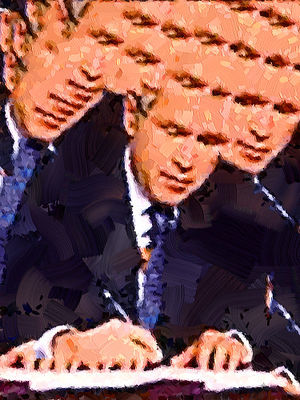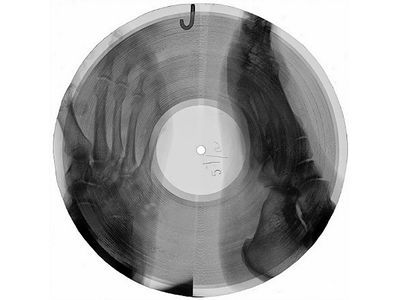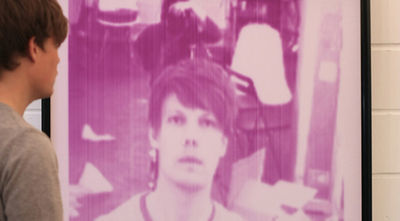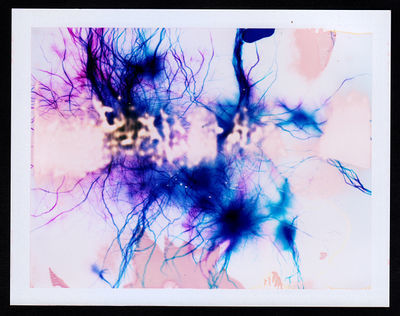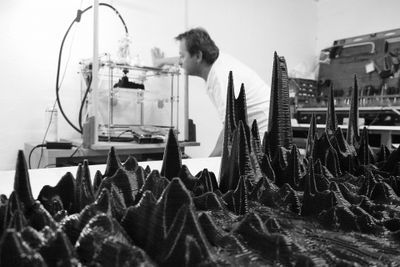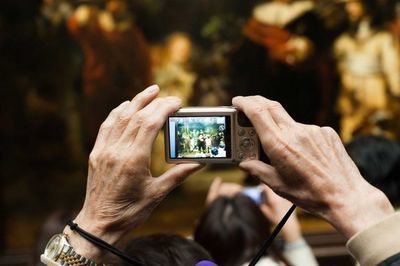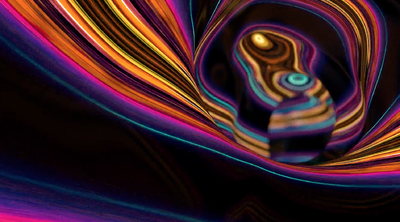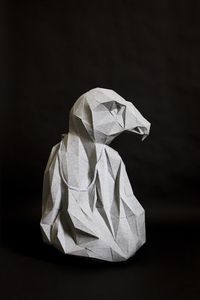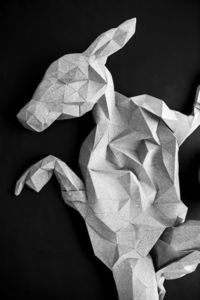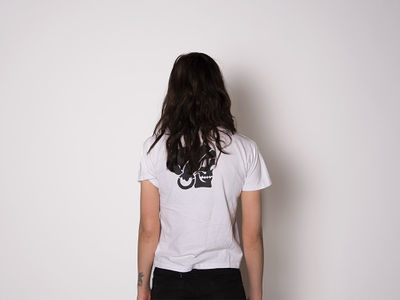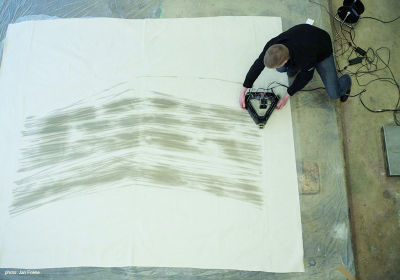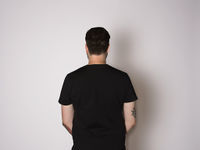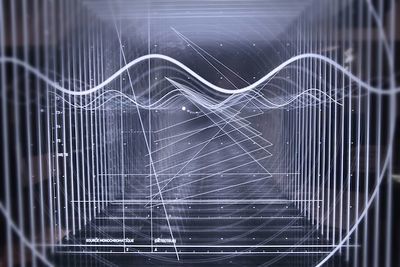Difference between revisions of "User:0848052"
| Line 8: | Line 8: | ||
robinhendriks94@hotmail.com | robinhendriks94@hotmail.com | ||
| + | |||
| + | == Workshops every week == | ||
== Research == | == Research == | ||
Revision as of 19:52, 5 October 2014
About
Robin Hendriks
Student Lifestyle & Design, WDKA Rotterdam.
robinhendriks94@hotmail.com
Workshops every week
Research
The codification of leadership - M Plummer-Fernandez
The first image results from Google searches for G.W. Bush signing into law the patriot Act, the Homeland Security Act and the Intelligence Reform Act are distorted with Photoshop's Content aware fill algorithm and then recreated as synthetic paintings by an autonomous painting script
Bone records
With a converted phonograph you could place music on used X-ray plates (which you could buy for cheap at hospitals). They cut a circle round the printed part and with a cigarette burning a hole in the middle, so it was ready to be played.
Temporary printing machine by Random Internationals.
As you stand before the the empty canvas, your image is slowly revealed until subject and object become, temporarily, united. The portrait gradually fades away, returning once more to nothingness.
High voltage image making by Phillip Stearns.
The project explores and extends the expressive capacity of instant photographic film technology beyond its ability to capture images of the world through the application of high voltage and various chemical agents. These treatments approach the film technology as a recording media, capable of creating images from physical, electrical, and chemical transformations
The decelerator helmet by Lorenz Potthast .
The Decelerator Helmet offers an experimental approach to an essential subject of our globalized, fast moving society. The technical reproducible senses are consigned to an apparatus which allows the user a perception of the world in slow motion. The float of time as apparently invariant constant is broken and subjected under the users control. His site: http://www.lorenzpotthast.de/deceleratorhelmet/
Voice sculpture of Obama's voice by Gilles Azzaro.
It reveals the invisible, a new digital concept, and also the content and value of a message that makes sense and is optimistic for the future. 39 seconds of Obama's State of the Union Adress. A video of the proces: https://www.youtube.com/watch?v=PM-l05XusNU
Venus of google by M. Plummer-Fernandez.
The Venus of Google was ‘found’ via a Google search-by-image, googling a photograph taken of an object Plummer had been handed over in a game of exquisite corpse. The Google search returned visually similar results, one of these being an image of a woman modelling a body-wrap garment. Plummer then used a similar algorithmic image-comparison technique to drive the automated design of a 3D printable object. The 'Hill-Climbing' algorithm starts with a plain box shape and tries thousands of random transformations and comparisons between the shape and the image, eventually mutating towards a form resembling the found image in both shape and colour.
A project called Between Screens by Olivier van Breugel and Simone Mudde.
In the Rijksmuseum there is this famous painting called Nachtwacht. But people don't look so much into the painting anymore, there is a crowd in front of the painting with people just taking pictures of it. Sometimes even selfies so they turn their back on the painting. And this duo thought this was strange. So they captured the behavior of all of these people coming to see the Nachtwacht. Here they explain it themselves: https://www.youtube.com/watch?v=yHDEA9OaIoI
Inside Me, by Nils Frahm.
This project is based on a 3D-scan technique, which allows him to reproduce an image of his own body as a 3D object in a software. It is possible to view this object not just from outside, but also from the inside as a negative as well, which creates abstract shapes. The colouration was generated with the help of colour data he took from a real picture. The film reflects the invisible inner world of an individual, which owns a small universe in itself, created by experiences and feelings - as well in the digital world as in real life. We try to express ourselves and approach our world another being, but still, nobody can see in our souls entirely. http://www.dmitryzakharov.de/Inside-Me-Nils-Frahm-Me-Rework
The T/shirt issue.
Dream-Land is a sculptural installation inspired by Edgar Allan Poe's poem 'Dream-land' (1844) where a dream-voyager arrives in a place beyond space and time and decides to stay there.
In a transdisciplinary approach to develop a digital narrative, eight pieces of the Victoria &Albert's permanent collection were 3D scanned and digitally sculpted into four physical hybrid creatures. Once its digital data is extracted, an object's certainty is removed, leaving it open for alteration and reinterpretation. Similar to dreams, all boundaries seem to vanish, creating a new context in which a parallel version of the object is free to exist. The known is replaced with endless narratives that collectively create an unexpected history and unremembered future. Their site: http://the-t-shirt-issue.com/home.1.0.html
Makers & spectators exhibition. Nils Völker and Christien Meindertsma.
It's an installation that reproduces the way we look. An eye-tracker records the movement of the visitor's eyes while looking at photographs of different objects. A robot hanging from the ceiling on top of a large pile of paper makes one dot for every point the visitor has just been looking at. This results in large scale images showing how the same objects have been perceived differently. The site: http://www.nilsvoelker.com/content/mu/index.html
Drawing engine sounds by Nils Völker.
The biggest difference between the electric and the "normal" Smart is surely its engine and the sound it makes. So Nils decided to create the artwork on the base of the audio data. They were recorded while driving along certain routes in Berlin like the Allee der Kosmonauten or Unter den Linden. The sound of the combustion motor has been drawn with its engine oil on canvas and the sound of the electric engine has been drawn with the vehicles backlight on long exposure photos. The frequencies and level information define the angles, lengths and colors. For the video: http://www.nilsvoelker.com/content/intersection/index.html
Shade Greenwich by Simon Heijdens.
A cellular glass facade that filters natural sunlight into a moving kaleidoscope of light and shadow, directly choreographed by the elements passing outside, to restore the unplanned natural timeline of the outdoors to the interior of the building. The 140 m2 responsive glass curve transfuses light varyingly throughout the day, from sharp in the morning to ambient in the afternoon. Wind gusts that pass the building outside directly affect the cells in the glass to turn from opaque to clear, thus passing or blocking sunlight to create a dimensional projection of light and shadow onto the floors and walls of the interior space. As the patterns of wind and the quality of light are constantly changing throughout the day, the interior space regains the unplanned character of the outdoors. At night, the principle is inverted, and interior light is filtered to the outside and projects the kaleidoscopic pattern onto the surrounding pavement.
FREQUENCIES (LIGHT QUANTA) by Nicolas Bernier.
The project frequencies (light quanta) is taking the quantum —the smallest measurable value of energy— as his conceptual basis. The whole project is based on the metaphorical relationships between basic quantum physics principles applied to the audiovisual creative process: particles, probabilities, wave/particle duality and discontinuity. Structured around these notions, the audio-visual composition stems from 100 sound and light fragments that develop themselves organically, generating an ever expending but yet disruptive form in time and space.

